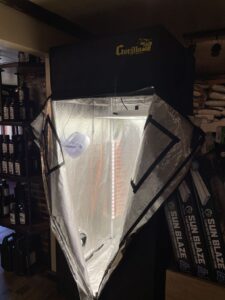The Beginner's Guide to Hydroponics: An Introduction to the Fundamentals of Hydroponic Gardening.
Feb 1
Hydroponic gardening is a new and interesting way to grow plants without soil. Instead, plants are grown in water that is full of nutrients, which gives them everything they need to grow. Hydroponic gardening is a great way to grow plants in a controlled setting, which can lead to plants that are healthier and produce more. If you've never done hydroponic gardening before, this guide for beginners will help you learn the basics and get started.
What is gardening with water?
Hydroponic gardening is a way to grow plants without soil. Instead of soil, a nutrient-rich water solution is used. This way of gardening lets you control every aspect of the growing environment, which can lead to plants that are healthier and produce more. Hydroponic gardening can be done indoors or outdoors, and it can be used for a wide range of plants, such as flowers, herbs, fruits, and vegetables.
Various kinds of hydroponic systems
There are different kinds of hydroponic systems, and each has its own pros and cons. These are some of the most common kinds of hydroponic systems:
- Deep Water Culture (DWC): is a method of growing plants in which the roots are suspended in nutrient-rich water.
- Nutrient Film Technique (NFT): In this kind of system, a thin layer of water that is rich in nutrients is constantly moved over the roots of the plants.
- Ebb and Flow (Flood and Drain): In this system, nutrient-rich water is poured over the roots and then drained back into a reservoir.
- Aeroponic System: In this type of system, a nutrient-rich water solution is misted on the roots of the plants.
Pros of gardening with hydroponics
Hydroponic gardening has some advantages over traditional gardening in soil, such as:
- Increased yields: With hydroponic gardening, you have full control over the environment in which your plants grow, which can make them healthier and more productive.
- Space-Efficient: Hydroponic gardens can be set up in small areas, which makes them a great choice for people who don't have a lot of outdoor space.
- Gardening All Year: Hydroponic gardens can be set up indoors, so you can grow plants all year long, no matter what the weather is like outside.
- Water conservation: Since the water is used over and over again in hydroponic gardening, less water is used than in traditional soil-based gardening.
- Pest and disease control: Because it's easier to control the growing environment in a hydroponic garden, pests, and diseases are less likely to attack it than in a traditional soil garden.
How to Start Growing Plants in a Hydroponic System
If you want to try hydroponic gardening, here are the steps you need to take:
- Choose a hydroponic system that meets your needs and fits in the space you have.
- Buy the things you need, like a hydroponic system, grow lights, nutrient solution, and seeds or seedlings.
- Follow the instructions from the manufacturer to set up the hydroponic system.
- Fill the system with a water solution that has a lot of nutrients.
- Put the plants in the hydroponic system and make sure they have enough light and food.
- Check the plants for signs of pests, disease, or a lack of nutrients on a regular basis.
Hydroponic gardening is a fun hobby that can lead to plants that are healthier and produce more. If you follow this guide for beginners to hydroponic gardening, you'll soon be on your way to growing your own hydroponic garden!
The Indoor Earthworm
510 W Hwy 50, O'Fallon, IL 62269

